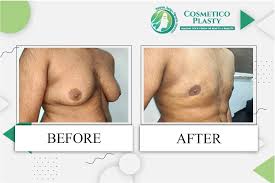Understanding the Procedure for Dental Crowns and Bridges

Strong 8k brings an ultra-HD IPTV experience to your living room and your pocket.
Dental crowns and bridges are common restorative procedures designed to enhance oral health and improve the appearance of damaged or missing teeth. Understanding these procedures can help patients make informed decisions about their dental care. This article will delve into Dental Crowns and Bridges in Dubai, their indications, and the step-by-step procedures involved in each treatment.
What Are Dental Crowns?
A dental crown is a tooth-shaped cap placed over a tooth to restore its shape, size, strength, and appearance. Crowns are often recommended for teeth that are:
Severely Decayed: When a cavity is too extensive for a filling.
Fractured or Cracked: To provide structural support.
Worn Down: To restore functionality.
Root Canal Treatment: After a tooth has undergone a root canal procedure, a crown is typically placed to protect the tooth.
Cosmetic Purposes: To enhance the appearance of a discolored or misshapen tooth.
Crowns can be made from various materials, including porcelain, metal, or a combination of both, depending on the location of the tooth and aesthetic considerations.
What Are Dental Bridges?
A dental bridge is a prosthetic device used to replace one or more missing teeth by anchoring artificial teeth (pontics) to adjacent natural teeth or implants. Bridges are commonly used when:
One or More Teeth Are Missing: To restore function and aesthetics.
Preventing Teeth from Shifting: Missing teeth can lead to adjacent teeth moving out of alignment.
Restoring Bite and Chewing Function: Missing teeth can compromise a person's ability to chew effectively.
Bridges can also be made from various materials, including porcelain, gold, or a combination of materials, tailored to the patient's needs and preferences.
The Benefits of Crowns and Bridges:
Both crowns and bridges offer several benefits:
Restoration of Functionality: They restore the ability to chew and speak properly.
Aesthetic Improvement: Both procedures enhance the appearance of teeth, boosting confidence.
Protection: Crowns protect damaged teeth from further decay and fracture.
Durability: With proper care, crowns and bridges can last many years.
The Procedure for Dental Crowns:
Step 1: Consultation and Examination:
The process begins with a consultation, where the dentist will examine the affected tooth and surrounding teeth. X-rays may be taken to assess the condition of the tooth and underlying bone.
Step 2: Tooth Preparation:
If a crown is deemed necessary, the dentist will prepare the tooth by removing a portion of the outer structure to make room for the crown. This is done under local anesthesia to ensure comfort.
Step 3: Impressions:
After preparing the tooth, the dentist will take impressions of the prepared tooth and surrounding teeth. This can be done using traditional impression materials or digital scanners. These impressions are sent to a dental lab to fabricate the crown.
Step 4: Temporary Crown:
While the permanent crown is being made, a temporary crown will be placed over the prepared tooth to protect it and maintain aesthetics. Temporary crowns are typically made from acrylic or resin and are not as durable as permanent crowns.
Step 5: Crown Placement:
Once the permanent crown is ready (usually within a few weeks), the patient will return for placement. The dentist will remove the temporary crown, check the fit and color of the permanent crown, and make any necessary adjustments. Once satisfied, the permanent crown is cemented in place.
Step 6: Follow-Up Care:
The dentist will provide instructions on caring for the new crown, including oral hygiene practices. Regular check-ups are essential to monitor the crown's condition and surrounding teeth.
The Procedure for Dental Bridges:
Step 1: Consultation and Evaluation:
Similar to crowns, the process for bridges starts with a thorough examination of the patient's mouth. The dentist will discuss the options available and determine if a bridge is the right solution.
Step 2: Preparing the Abutment Teeth:
To anchor the bridge, the adjacent teeth (abutment teeth) must be prepared. This involves reshaping these teeth by removing a portion of enamel to accommodate the crowns that will support the bridge. Local anesthesia is used to ensure comfort during this process.
Step 3: Taking Impressions:
After preparing the abutment teeth, the dentist will take impressions of the mouth to create a custom bridge that fits perfectly. Digital scans may also be used to create an accurate model.
Step 4: Temporary Bridge:
A temporary bridge may be placed while the permanent bridge is being crafted in a dental lab. This temporary device serves to protect the abutment teeth and maintain aesthetics.
Step 5: Bridge Placement:
Once the permanent bridge is ready, the patient returns for placement. The dentist will remove the temporary bridge, check the fit and alignment of the new bridge, and make any necessary adjustments. The bridge is then secured in place with dental cement.
Step 6: Maintenance and Care:
Patients will receive guidance on maintaining their bridges, including proper oral hygiene techniques. Regular dental check-ups are essential to ensure the longevity of the bridge.
Aftercare for Crowns and Bridges:
Proper aftercare is crucial for the longevity of both crowns and bridges:
Oral Hygiene: Brush and floss regularly, paying special attention to the area around the crowns and bridges.
Diet Considerations: Avoid hard or sticky foods that could damage the restorations.
Regular Dental Visits: Routine check-ups allow the dentist to monitor the condition of the crowns and bridges and address any issues promptly.
Conclusion:
Dental crowns and bridges are effective solutions for restoring function and aesthetics to damaged or missing teeth. Understanding the procedures involved can empower patients to make informed decisions about their dental care. If you are considering crowns or bridges, consult with a qualified dental professional to discuss your options and determine the best course of action for your oral health. With proper care, both crowns and bridges can provide lasting results, helping you achieve a healthy, beautiful smile.
Note: IndiBlogHub features both user-submitted and editorial content. We do not verify third-party contributions. Read our Disclaimer and Privacy Policyfor details.







